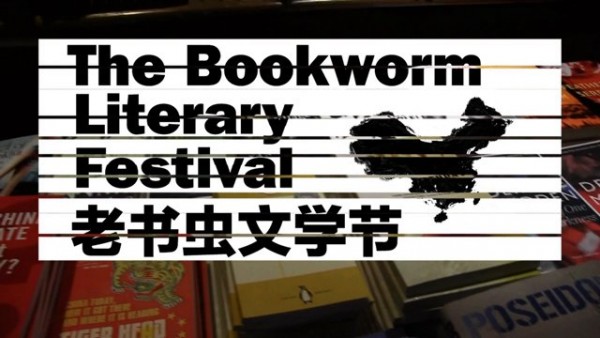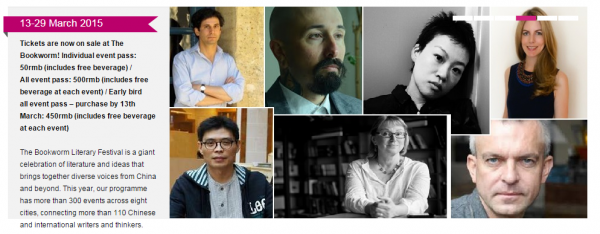Posted: March 26th, 2015 | 1 Comment »
A friend recently reread Evelyn Waugh’s Put Out More Flags (shamefully I never have) and told me that the title derives from a quote by a Chinese sage quoted and translated in Lin Yutang’s The Importance of Living….
‘A man getting drunk at a farewell party should strike a musical tone, in order to strengthen the spirit…and a drunk military man should order gallons and put out ore flags in order to increase his military splendour.’
Indeed Waugh also includes a quote from an epigram by Chang Ch’ao (Zhang Zhao) quoted and translated by Lin in the same book…
‘A little injustice in the heart can be drowned by wine; but a great injustice in the world can be drowned by the sword.’
Waugh’s Put Out More Flags was published in 1942 and is a satire on the English in the first years of the war. Lin Yutang’s The Importance of Living was published in 1937, quickly beca,e a bestseller (and indeed may still hold the record for the largest number of copies sold of a China book, though Lin’s charming and sophisticated books, notably My Country and My People, are little remembered today. Lin’s tips are still worth reading though – ‘If you can spend a perfectly useless afternoon in a perfectly useless manner, you have learned how to live’ – indeed.
Sadly, though it is clear Waugh read Lin, I can find no reference to the two ever meeting…..




Posted: March 25th, 2015 | 1 Comment »
Quite simply today, an old Shanghai bus in all its glory…..

Posted: March 24th, 2015 | No Comments »
I think I’m right in saying that Joseph Conrad never actually set foot in Shanghai, though the city/port does crop up in several of his books (Lord Jim, Typhoon and a couple of others I think). Not sure what he would of made of it? One of his occasional correspondents, Saint-John Perse (also known, and born, Alexis Leger, did write to Conrad in England in 1921 about Shanghai. Leger was a French poet-diplomat (a once quite common breed now largely extinct as diplomats come with career plans and MBAs rather than learning) and Press Attache at the French Legation in Peking during World War One. In February 1921 Leger wrote to Conrad (in Canterbury) from the French Legation in Peking regarding Shanghai…
“I really can’t imagine what I could offer you of interest here, unless it might be, from among the cosmopolitan fauna of Shanghai, a few specimens of the European adventurer; and beautiful adventuresses as well, transplanted from America or White Russia, arrogantly flaunting the respectability they have won. I might also throw in the astonishing corps of estuary pilots, comfortably supplied with bank accounts and extensive maritime connections, all of them from Europe, recruited among the Scots. And finally, in the Shanghai Club, where the bar is the longest specimen of the cabinet maker’s art in the world (“long as an ocean-front”), you might casually pick up many a salty tale, and the confirmation of many tales already heard. You might even run into a few of your old shipmates. For sooner or later they all end up in Shanghai; and Shanghai is the only place between Java Head and Vladivostok that is still the prodigious crossroads of adventurers, an inexhaustible haunt of tough men, untamed and carved in one piece out of that rare material we call energy.”
Sadly this letter is contained in Saint-John Perse/Alexis Leger’s collected Letters (Princeton University Press, 1979) – which only go one way, so I have no idea what Conrad wrote back to him?

Posted: March 23rd, 2015 | No Comments »
An interesting new book from Shareen Blair Brysac and Karl Meyer on the origins and controversies around America’s great China collections….

Thanks to Salem sea captains, Gilded Age millionaires, curators on horseback and missionaries gone native, North American museums now possess the greatest collections of Chinese art outside of East Asia itself. How did it happen? The China Collectors is the first full account of a century-long treasure hunt in China from the Opium Wars and the Boxer Rebellion to Mao Zedong’s 1949 ascent.
The principal gatherers are mostly little known and defy invention. They included “foreign devils” who braved desert sandstorms, bandits and local warlords in acquiring significant works. Adventurous curators like Langdon Warner, a forebear of Indiana Jones, argued that the caves of Dunhuang were already threatened by vandals, thereby justifying the removal of frescoes and sculptures. Other Americans include George Kates, an alumnus of Harvard, Oxford and Hollywood, who fell in love with Ming furniture. The Chinese were divided between dealers who profited from the artworks’ removal, and scholars who sought to protect their country’s patrimony. Duanfang, the greatest Chinese collector of his era, was beheaded in a coup and his splendid bronzes now adorn major museums. Others in this rich tapestry include Charles Lang Freer, an enlightened Detroit entrepreneur, two generations of Rockefellers, and Avery Brundage, the imperious Olympian, and Arthur Sackler, the grand acquisitor. No less important are two museum directors, Cleveland’s Sherman Lee and Kansas City’s Laurence Sickman, who challenged the East Coast’s hegemony.
Shareen Blair Brysac and Karl E. Meyer even-handedly consider whether ancient treasures were looted or salvaged, and whether it was morally acceptable to spirit hitherto inaccessible objects westward, where they could be studied and preserved by trained museum personnel. And how should the US and Canada and their museums respond now that China has the means and will to reclaim its missing patrimony?
Posted: March 22nd, 2015 | No Comments »
The new series of Little Black Classics from Penguin are short and cheap, but lovely all the same…and a good few have a China aspect to them…




Posted: March 21st, 2015 | No Comments »

Wade Shepard’s Ghost Cities of China is the latest book in my Asian Arguments series for Zed Books… Featuring everything from sports stadiums to shopping malls, hundreds of new cities in China stand empty, with hundreds more set to be built by 2030. Between now and then, the country’s urban population will leap to over one billion, as the central government kicks its urbanization initiative into overdrive. In the process, traditional social structures are being torn apart, and a rootless, semi-displaced, consumption orientated culture rapidly taking their place. Ghost Cities of China is an enthralling dialogue driven, on-location search for an understanding of China’s new cities and the reasons why many currently stand empty.

The following are the author’s speaking engagements across China this month:
Â

Sat March 28, 17:00- The Bookworm Literary Festival, Chengdu
Hometowns and Ghost Cities 家å›å’Œé¬¼åŸŽ-城市å˜è¿çš„ç—…æ–‘ Ran Yunfei, Wade Shepard
Sunday March 29th, 16:00- The Bookworms Literary Festival, Suzhou
Hometowns and Ghost Cities
Hometowns and Ghost Cities: Perspectives on urbanization and changing concepts of home in China, from non-fiction writer Wade Shepard and a panel of leading thinkers.
The Final Word: BLF Closing Party (Free Event / å…费入场) 19:00
Authors Wade Shepard, Zennon Kapron, Frane Lessac and Bridget Strevens-Marzo will be on hand to bring the BLF to a rousing conclusion!

Posted: March 20th, 2015 | No Comments »
Shanghai destroys, Beijing obliterates…it’s hard not to contrast the non-policy of preservation in mainland China with the growing preservation movement in Taiwan. The latest campaign to win historical preservation status in Taipei is the Taipei Railway Workshops. This decision from the Cultural Heritage Bureau overrules previous plans to give most of the site to a developer. The compound will now be preserved in its entirety, while the historic workshop itself will be renovated to house a railway museum.
Constructed in the 1930s during Japanese colonial rule, the Taipei Railway Workshop was known as the “hospital†for the nation’s trains, and considered the most important railway maintenance depot in Taiwan. The compound features an impressive office block, an engine room and a Japanese-style bath house, as well as substantial gardens – it ain’t just any railway workshop this one!
Very well done to the Taipei Railway Workshop Heritage Conservation Union; tough shit to the Taiwan Railways Administration (TRA), eager as ever to sell of heritage to grab cash (see the search box under Taiwan to see more examples of the TRA’s venal attempts to dump heritage for fast bucks)



Posted: March 19th, 2015 | No Comments »
Parks Coble’s China’s War Reporters is now out and looks interesting . Having looked at the foreign press in China at the period (and those Chinese who worked for foreign language publications), I’m keen to see this perspective….

When Japan invaded China in the summer of 1937, many Chinese journalists greeted the news with euphoria. For years, the Chinese press had urged Chiang Kai-shek to resist Tokyo’s aggressive overtures. This was the war they wanted, convinced that their countrymen would triumph.
Parks Coble recaptures the experiences of China’s war correspondents during the Sino-Japanese War of 1937–1945. He delves into the wartime writing of reporters connected with the National Salvation Movement—journalists such as Fan Changjiang, Jin Zhonghua, and Zou Taofen—who believed their mission was to inspire the masses through patriotic reporting. As the Japanese army moved from one stunning victory to the next, forcing Chiang’s government to retreat to the interior, newspaper reports often masked the extent of China’s defeats. Atrocities such as the Rape of Nanjing were played down in the press for fear of undercutting national morale.
By 1941, as political cohesion in China melted away, Chiang cracked down on leftist intellectuals, including journalists, many of whom fled to the Communist-held areas of the north. When the People’s Republic was established in 1949, some of these journalists were elevated to prominent positions. But in a bitter twist, all mention of their wartime writings disappeared. Mao Zedong emphasized the heroism of his own Communist Revolution, not the war effort led by his archrival Chiang. Denounced as enemies during the Cultural Revolution, once-prominent wartime journalists, including Fan, committed suicide. Only with the revival of Chinese nationalism in the reform era has their legacy been resurrected.



















